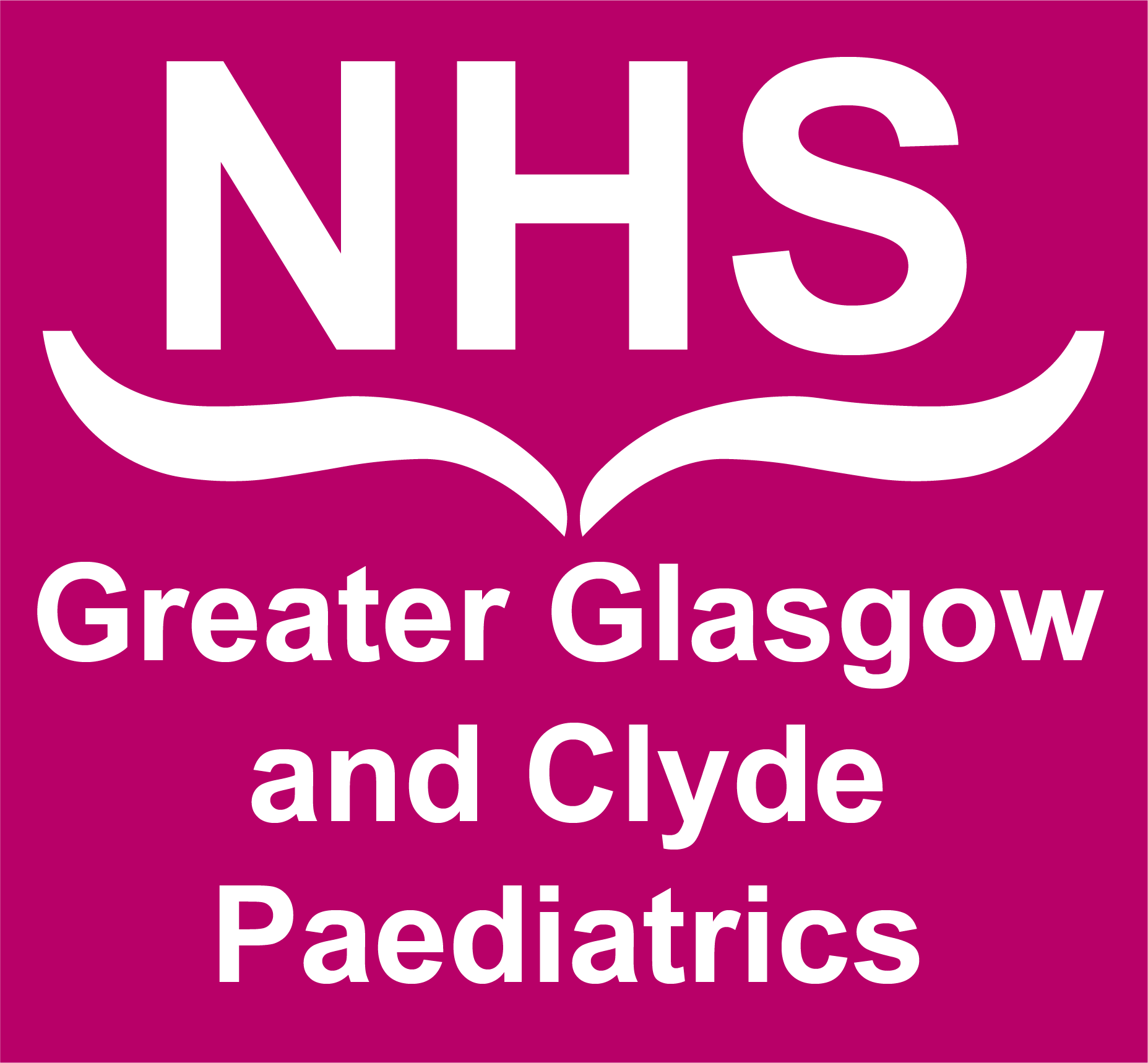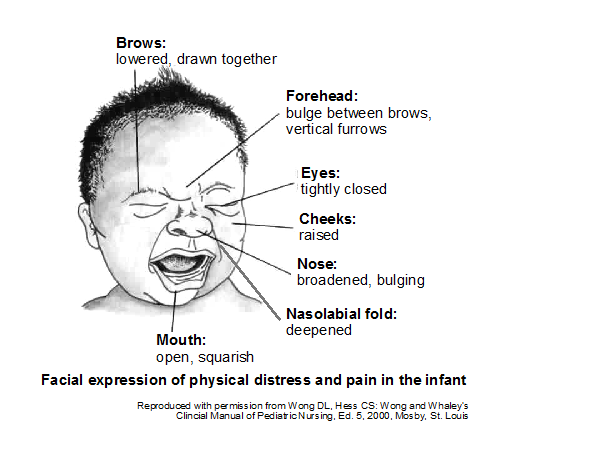1) The best approach to management of neonatal pain is prevention.
- Pain assessment should be ongoing and incorporated into the plan of care for all neonates with potential and actual pain experiences.
- Limit potentially painful procedures and administer appropriate analgesics when pain is anticipated or prior to procedures.
2) Non-pharmacological Interventions
- Breast milk, offer breast feed, swaddling, kangaroo care, facilitated touch, etc. may help alleviate pain and should be used, when appropriate, prior to and during painful procedures (such as blood sampling, PIV or PICC placements).
- Parental involvement has been demonstrated to reduce pain and should be allowed when all involved parties are comfortable.
3) Pharmacological Interventions - Oral and Topical
Oral Analgesics
- Oral sucrose
Expressed breast milk or oral sucrose may be used for procedural pain as per the MCN West of Scotland Neonatal Guideline. Oral sucrose is not to be used solely for irritability, or for chronic pain.
- Oral Paracetamol
May be used for management of pain in particular post-operative pain relief. Also may be used following vaccinations.
- Oral Opiates
Oral morphine may be given for procedural pain. Also may be used as a weaning programme when extended use of IV morphine has been necessary.
Topical or Local Anaesthetics
Local anaesthetics may be applied to the skin before clinical procedures. The cream should be applied to no more than three areas at the same time.
There are two types of local anaesthetic cream: Ametop Gel and EMLA cream.
EMLA cream is licenced for infants over one year of age and therefore not frequently used within neonatal units.
- Ametop Gel
Ametop Gel contains the anaesthetic tetracaine and is licenced for children over one month of age. It is applied 30 to 45 minutes before the procedure and wiped off before the procedure begins, it should not be left on the skin longer. The site remains numb for four to six hours. It increases the size of the blood vessels where it is applied and therefore can cause temporary redness.
Potential Side Effects of the Creams
There can be allergic reactions to the creams, causing itching, swelling or bruising where it is applied. Some changes in skin colour may occur where it is applied however this is normal.
Local anaesthetics should NOT be used on:
- wounds, broken skin or eczema
- the ears, nose , eyes, mouth or lips
- genitalia or anus
- Lidocaine
Lidocaine may be administered subcutaneously for procedures such as chest drain insertion. Given at least one to two minutes before the procedure.
IV Pharmacological Interventions:
i) Morphine
- Appropriate in neonates without hypotension
- Should usually be given on a PRN basis in preterm neonates
- May be given pre-emptively in older babies
- Complications include respiratory depression, hypotension, bladder distention/urinary retention, feeding intolerance
- Caution should be exercised in neonates <26 weeks gestational age or those with pre-existing hypotension
- Opioids for Neonates Receiving Mechanical Ventilation
Mechanical ventilation is potentially a painful intervention for the neonate. Opioids have historically been used within neonatal intensive care to ease any pain or discomfort experienced. However there is insufficient evidence to indorse the routine use of opioids for neonates requiring mechanical ventilation. It has been reported that opioids are no better or worse for ventilated babies (in terms of future development, duration on ventilation, death, strokes or hospital stay) than other drugs or placebo. It is recommended that opioids should be used selectively, when indicated and guided by clinical judgement and indicators of neonatal pain (Bellu et al 2010).
- Weaning from Opioid Treatment
It may be necessary to instigate a weaning programme for those neonates who have had an extended period of time on opioids (Appendix 2). This should be managed in conjunction with appropriate pain assessment.
ii) Fentanyl
- May be used in younger neonates and those with hypotension
- Should usually be given on a PRN basis in preterm neonates
- Complications include respiratory depression, chest wall rigidity (especially if given too quickly), mild hypotension
- Used only in babies who are ventilated due to risk of chest wall rigidity.
iii) Paracetamol
- May be considered for post-operative patients who are nil by mouth
- May be used in combination with opiates
- Caution in hepatic impairment or neonates with unconjugated hyperbilirubinaemia
- For appropriate dose range please refer to the West of Scotland Neonatal IV Drug Monographs.
4) Sedatives for the treatment of stress/anxiety
Benzodiazepines may be given for associated anxiety/stress but are not appropriate for the treatment or prevention of pain and not recommended for use in the preterm neonate.
5) Nurse Controlled Analgesia (NCA)
Nurse controlled analgesia (NCA) refers to a modified morphine infusion using technology which permits more flexibility to manage breakthrough pain than a simple continuous infusion. It is used in limited clinical areas in the West of Scotland generally in the immediate post-operative period. The nurse caring for the patient may press a button to give a bolus dose on the basis of a request for analgesia, pain severity scoring or in anticipation of pain.
Nurse Controlled Analgesia (NCA) is a technique of morphine administration appropriate for some neonates. NCA is delivered through a specifically designed locked pump which allows for programming of a bolus dose to be delivered by nursing staff on the press of the NCA button. Commonly the bolus is 10 – 20 micrograms/kg with a 20-30 minute lockout period. A low rate of background infusion may also be used alongside the bolus, and is set from 4micrograms/kg/hr upwards.
Although this technique potentially allows for larger doses of opiates to be administered, experience shows that the same level of background pain relief is achieved with much reduced total opiate dose. This is because of the dynamic nature of the administration which allows for doses to be given exactly at the moment the patient is experiencing pain or to pre-empt painful/ distressing procedures such as endotracheal suction.
At its most effective, when used in tandem with regular pain scoring NCA will tend to wean itself. For example, as the patient recovers from the pain of surgery their pain scores will improve and the NCA will require fewer presses. Reduction in total opiate load has the potential advantages of reduced respiratory support and more rapid return of GI function post-surgery.
Patient Selection
Patients selected for NCA usually have (or are expected to have) severe acute pain for whom the oral route is not appropriate, such as during the immediate post-operative period. Prior to setting up the infusion the anaesthetist or acute pain service staff will consider the suitability of NCA for each individual patient and the anticipated effectiveness of NCA for the type of surgery / pain.
Absolute contraindications to NCA are:
- Known allergy to opioids (very rare)
Extra caution is advised when using a NCA in patients with certain medical conditions:
- Raised intra-cranial pressure (ICP): Known or suspected raised ICP of any cause represents a relative contraindication to NCA analgesia, although in appropriate circumstances its use in areas with high nurse/patient ratios may still be fitting.
- Severe respiratory disease: NCA should be used with caution in these Patients
- Children with renal impairment or sensitivity to morphine
- No supplementary opioids should be administered while the patient is receiving NCA
- NCA pumps for children must only be programmed by an anaesthetist, member of the Acute Pain Service or appropriately trained health professional.
- All personnel who care for patients receiving NCA must be trained and competent to do so.
- All pumps should be kept locked while in use and a dedicated line should be used. The anti-siphon line should be connected directly to the patients intravenous access or through a 2 way non-return connector
- Parents should be advised in a sensitive manner that they are not permitted to administer a bolus by pressing the button
- Nursing staff should carry out appropriate pain assessment using local pain assessment tool and document hourly.
6) Neonatal Regional Techniques
Neonates can present a unique challenge in the management of post-operative pain. Regional techniques are being increasingly used to minimize post-operative pain.
Epidural
The most commonly used technique is a single dose administration of local anaesthetic agent into the caudal (epidural) space for operations such as inguinal hernia repair. This provides adequate pain relief during the surgery itself, and for up to four hours afterwards.
Another commonly used regional technique involves placement of an epidural catheter in the epidural space in theatre for prolonged pain management. The epidural catheter may have been inserted into the caudal space and advanced to a level in the back that corresponds to the level of surgical incision, or may have been inserted higher up the back at this level. For surgery, where significant pain may be a predicted problem post-operatively, for example laparotomy, a local anaesthetic infusion pump is attached to the catheter to provide ongoing pain relief. Strict monitoring of the patient and pump infusion rates is in accordance with local Acute Pain Team guidelines and protocols. Epidural infusions would normally run for 2 to 3 days post operatively. Observed benefits from this technique are potentially earlier extubation, early return of bowel function, and a reduction in morphine requirement.
More recently single shot spinal anaesthesia, combined with a single shot caudal injection in ex-premature neonates is being performed for surgery below the umbilicus. This is perceived to be beneficial in reducing the risk of post-operative apnoea’s in this group of patients by avoiding the need for general anaesthesia, and can result in earlier return to feeding. This technique will result in the neonate not being able to move their legs for about an hour after the local anaesthetic injection. Movement of their legs should be observed to return to normal after this time period.
Extrapleural Catheters
Extrapleural catheters are placed by the surgeons in neonates undergoing cardiac or thoracic surgery. Local anaesthetic infusion pumps will be used in a similar way to epidural pumps to provide ongoing pain relief.





